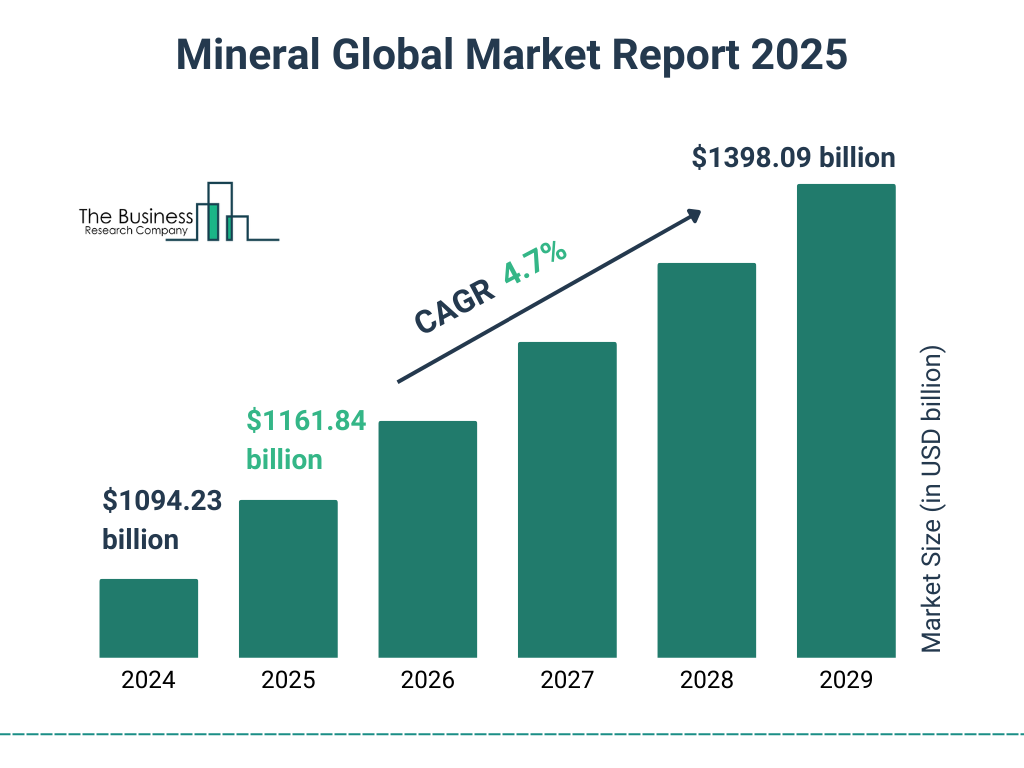Industrial Minerals Market

The industrial minerals market plays a critical role in powering modern industries — from construction and manufacturing to agriculture and energy. As global demand for sustainable and high-performance materials continues to rise, the market is evolving to meet the needs of a rapidly changing economy.
In this post, we’ll explore what industrial minerals are, their key applications, current market trends, and what the future holds for this essential sector.
📈 What Are Industrial Minerals?
Industrial minerals are naturally occurring, non-metallic minerals used in various industrial applications. Unlike metals or fuels, they are valued for their physical and chemical properties rather than their energy content or metallic content.
Common industrial minerals include:
- Calcium carbonate
- Kaolin (clay)
- Silica sand
- Barite
- Talc
- Dolomite
- Feldspar
These minerals are used in a wide range of products, including:
- Cement and concrete
- Paints and coatings
- Plastics and rubber
- Drilling fluids (oil & gas)
- Agricultural soil amendments
- Ceramics and glass

📊 Market Trends Driving Growth
The global industrial minerals market is projected to grow significantly over the next decade, driven by several key factors:
1. Construction Boom in Emerging Markets
Rapid urbanization and infrastructure development in Asia-Pacific, Africa, and Latin America are boosting demand for minerals like limestone, silica sand, and kaolin.
2. Sustainability and Green Technologies
With increasing environmental regulations, industries are turning to eco-friendly mineral alternatives that reduce emissions and support circular economy practices.
3. Energy Transition
Minerals like barite and silica sand are essential in oil drilling and renewable energy technologies, including solar panels and energy storage systems.
4. Advanced Manufacturing
High-purity minerals are increasingly used in high-tech manufacturing , from semiconductors to specialty coatings.

🌍 Regional Market Highlights
- North America: Strong demand from construction and energy sectors, particularly in the U.S.
- Europe: Focus on sustainable sourcing and recycling of industrial minerals.
- Asia-Pacific: Fastest-growing market due to rapid industrialization and government infrastructure investments.
- Middle East & Africa: Increasing exploration and mining activities, especially in Saudi Arabia, Egypt, and South Africa.
🌱 Future Outlook
As industries continue to innovate and adopt cleaner technologies, the demand for high-performance, sustainable industrial minerals will only increase. Companies are investing in:
- Automated mineral processing
- Low-impact extraction techniques
- Recycling and reuse of industrial byproducts
This shift not only improves efficiency but also aligns with global sustainability goals.

❓ Frequently Asked Questions (FAQs)
Q: What are the most in-demand industrial minerals today?
A: Calcium carbonate, silica sand, kaolin, barite, and talc are among the most widely used due to their versatility across industries.
Q: How is the industrial minerals market affected by environmental regulations?
A: Stricter regulations are pushing the market toward sustainable sourcing, eco-friendly processing, and reduced carbon footprints.
Q: Which region is leading the industrial minerals market?
A: Asia-Pacific currently leads in growth due to rapid urbanization, infrastructure development, and government investments.
Final Thoughts
The industrial minerals market is a cornerstone of modern industry, supporting everything from construction to renewable energy. As global demand increases and sustainability becomes a top priority, companies that adapt to these changes will lead the way in this evolving market.
Stay ahead of the curve by keeping up with the latest trends, innovations, and supply chain developments in the world of industrial minerals.

